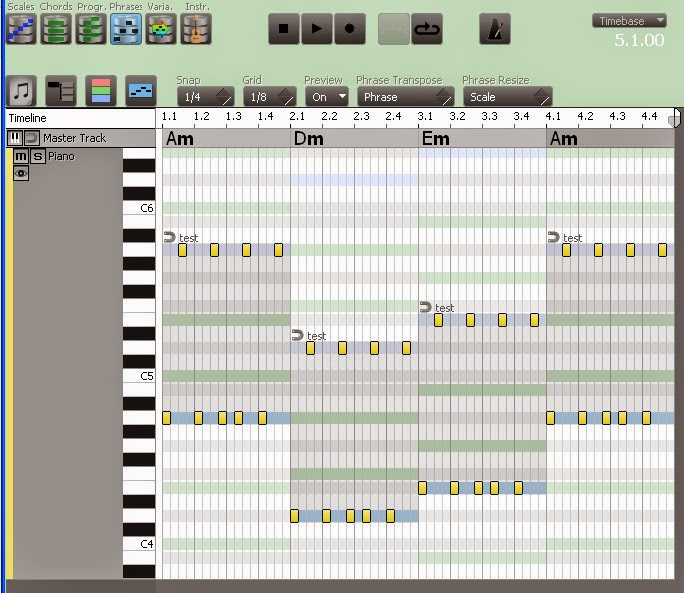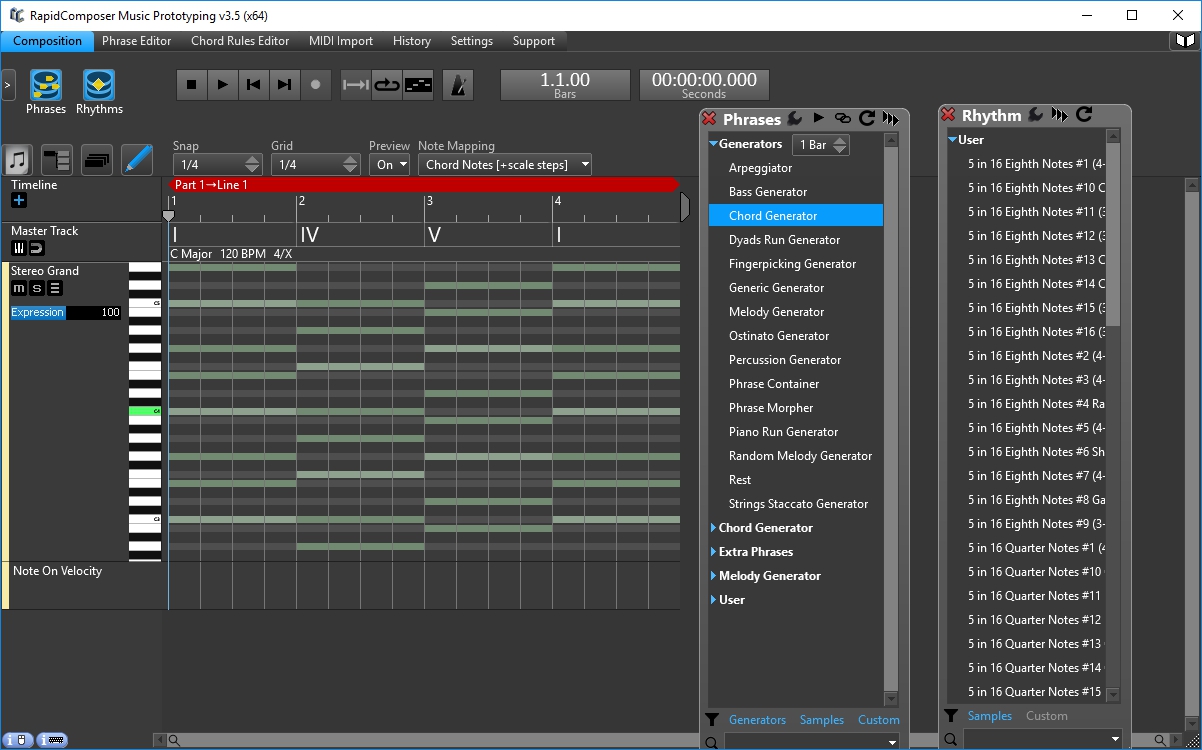

The Chord Editor – accessed by double-clicking on a chord event – provides a table in which you can select the root note, ‘type’ (major, minor, diminished, etc), ‘tensions’ (dom7, maj7, #9, etc), and also specify a different bass note (a G chord with a C bass note – G/C – for instance). A chord stays active until the next chord event occurs, even where there’s a gap between chord events on the timeline. Chords are added to the timeline using the Draw (pencil) tool, with which you define the timeline start and extent of a chord once a track contains one chord event you can also use the Chord Editor to add subsequent chord events. By doing this, you unlock a whole load of Cubase’s other chord-based tricks.Ĭhord events aren’t intended to actually play a chord (although you can assign a MIDI or Instrument track through which to monitor the chords being generated by the Chord Track), but rather to act as a data track through which you can tell Cubase what chord is active at any point on the timeline. It’s the DAW equivalent of sketching out a chord chart on a piece of paper.

This is actually a very rapid and effective way of laying down a musical idea. At their most basic, these events allow you to map out and notate a chord (and scale) progression for a piece of music and to have that progression show in the timeline so that you, or the musician(s) you are working with, can follow it when laying down new parts for the music. These are blocks that define a chord and display its name on the timeline, and, given the relationship between chords and scales, can also show scale ‘events’.
#RAPIDCOMPOSER TUTORIAL SERIES#
Like Tempo and Time Signature tracks, a Cubase project can contain only one Chord Track, which makes sense if you think about it: yes, you may find two different chords that sound good when played together – F major and C major, for example – but really all you’re doing there is creating a new, extended chord, eg, Fmaj9 or C6sus4 (depending on the root note).Ī Chord Track shows a series of chord ‘events’. The main tool Cubase provides to help with this is the Chord Track. Also, knowing what will sound good following, for example, an F9sus4 when playing in C Dorian can require an encyclopaedic theory knowledge… or a lot of experimentation. Major and minor triads are simple enough, but chords can get much more complex than that – both to understand and to play – with voicings, inversions, extensions, augmentations and all the rest of it. Chords are, of course, related to musical keys and scales, which places them right at the heart of music theory, something that not all producers have a formal or developed knowledge of. Understanding the basics of music theory does help to get more out of it.Chords are a vital component of nearly all forms of music, creating the harmonic bedrock on which melody, mood and emotion are built, so it’s little surprise that Cubase has a number of tools and workflows that centre around them. There are a huge number of chords and scales and although there are a large number of phrases, I like how you are not limited by these with the phrase generators and the random nature of these generators is a great way to see what happens. The structure is flexible enough to allow you to create a composition for any style, and any length. From scoping out whole songs to providing melodies or piano lines, it’s an amazing powerful and flexible composition tool. If you’ve ever struggled producing melodies or harmonized parts for chords then this can really help your creativity – in minutes. "RapidComposer is a very impressive and inspirational tool. The entire review is worth a read, reviewer is a much better wordsmith than I am. Quote from the Andrulian review of RapidComposer - this reviewed V3 in 2018, V4 is now current release.

I've been spending most of my hobby time with RapidComposer and I like the work I've been able to create.
#RAPIDCOMPOSER TUTORIAL FULL#
I've been using the demo for the last 3 weeks and want to purchase the Full version. It easy to get the created midi out of RapidComposer into your daw.

It can run standalone and host your vst sample libraries or it can run as a vst within your daw and output midi to your vst samples. But it is no more difficult to grasp than starting out with other daws. RapidComposer is not every persons "cup of tea".
#RAPIDCOMPOSER TUTORIAL DOWNLOAD#
If you at all curious about RapidComposer this might be a good time to download the 30 day demo to take a look before the sale. MusicDevelopments RapidComposer is "scheduled" to have a sale between Sep 6 - Sep 16, 2021.


 0 kommentar(er)
0 kommentar(er)
